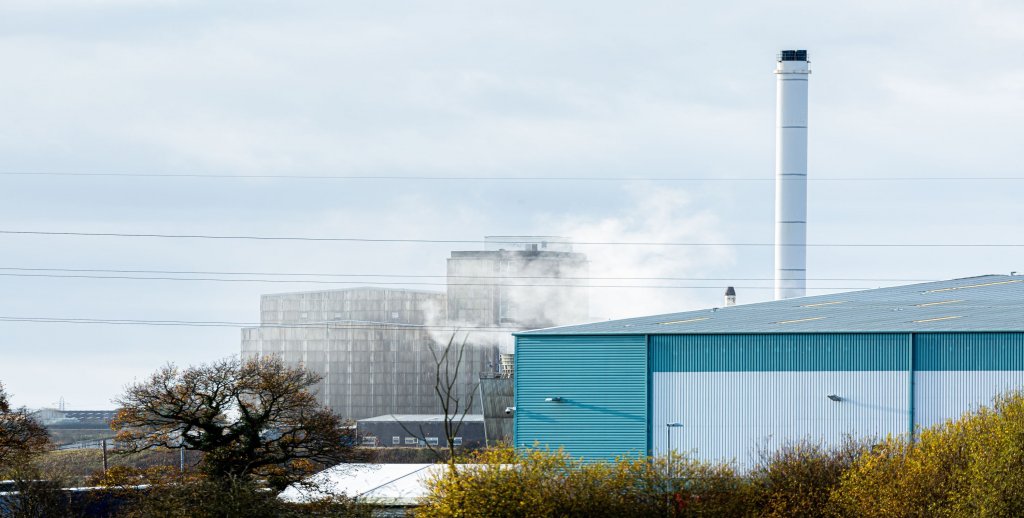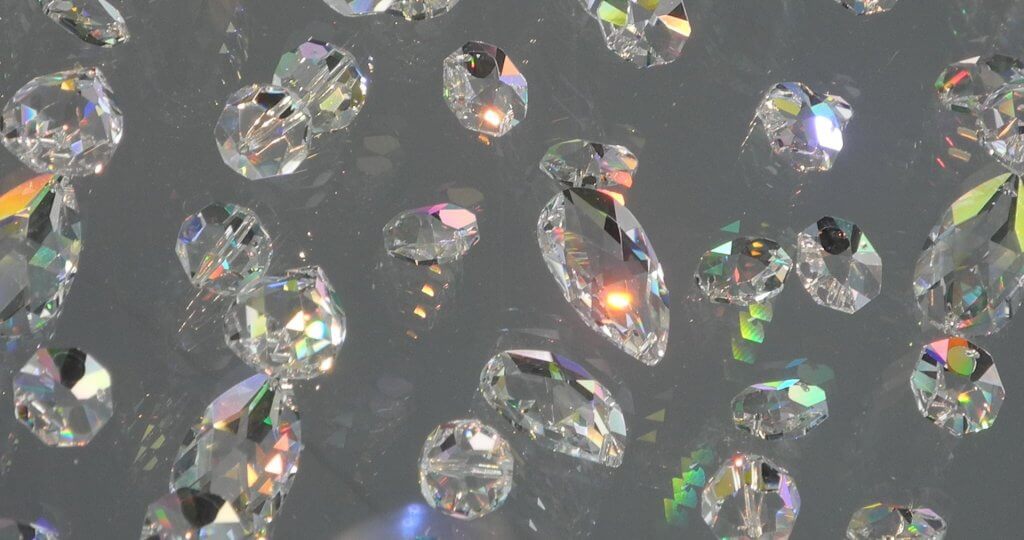Don’t be fooled by CVD Diamonds
Key Takeaways
- CVD stands for Chemical Vapor Distillation, and represents one of the main processes used to create lab grown diamonds, and one of only two used to create lab grown diamonds of gemstone quality (for use in jewelry).
- The process requires a diamond seed, and a cocktail of gases – along with plenty of heat – to grow diamond much, much faster than it can be formed in nature.
- The results are quite convincing, but not in a financial or cultural sense. They’re lacking the sentimental and monetary value that make natural diamonds so special and, for that reason, have not seen tremendous success in the global market.
- The process is often advertised as more environmentally friendly and ethical, but this is questionable.

At WillYou.Net, whenever the subject of lab grown diamonds comes up, it is typically centered on the natural diamond vs lab grown diamond debate. This is for obvious reasons – most shoppers want to figure out exactly which side of the fence they land on, then figure out the specifics from there.
Lab grown diamonds are clearly here to stay, so there’s no use in glossing over the subject. Besides, with the noise surrounding lab grown diamonds growing, it can be helpful to know a little more about how these diamonds come into being – what the benefits are and, most importantly, what sacrifices you will have to make if you choose to take this new route, and why.
Every jeweler and gemologist looks upon the debate a little differently, but there’s no disputing the facts. For that reason, here’s everything you need to know about CVD diamonds – including why we think they’re a poor substitute for the natural, earth-made thing.
What are CVD diamonds?
CVD diamonds are lab grown diamonds, created using a process called Chemical Vapor Deposition (CVD).
There are a number of ways to create a diamond in a lab, but only two are currently used to create gem quality diamonds – CVD, and another process known as High Pressure High Temperature (HPHT), which we have covered in a separate article here.
The process was first established back in the 1980s. It’s grown increasingly common over the years, since it doesn’t require the intense pressure needed for HPHT diamonds. It’s a quick and (relatively simple) process, which means that manufacturers can pump their diamonds out onto the market pretty quickly.
The fashion jeweler Pandora, which we’ve reviewed in the past, added CVD diamonds to their UK stores in 2021. In the world of fine jewelry, their uptake remains relatively low, with natural diamonds still representing the most popular choice among buyers.
How Does CVD Work to Create Diamonds?
Using high heat and gas with a high concentration of carbon (the building blocks of diamonds) labs can accelerate the process of creating a real diamond.
The process of CVD begins the same as HPHT: with a diamond seed (a single crystal diamond which is, as you can imagine, incredibly small) placed in a special chamber.
In CVD, that diamond seed is then heated to an incredibly high temperature (around 1470°F) – before the chamber is filled with a carbon-rich gas. Using a process known as ionization, the carbon is separated from the gas before it sticks itself to the diamond seed.
One atom after another, the diamond grows. The result is pretty rough, and needs to be cleaned, cut, and polished like any other diamond.
All in all, the process takes around 1 month to complete – a lot less time than the billion-year+ wait time for a natural diamond. As you can imagine, this offers a major benefit to manufacturers, who want to be able to meet the highest demand possible with their diamonds.
Many CVD diamonds are initially brown – although no one is quite sure why at this point. For very obvious reasons, it is in not in the manufacturer’s interests to produce large quantities of brown-tinted diamonds, since these will find a very, very low price on the market.
The unwanted color in CVD diamonds can be removed using High Pressure High Heat. This is more generally known as an enhancement, which can also be used on natural diamonds afflicted by poor color. Diamond enhancements are almost always avoided, and most jewelers will not work with enhanced diamonds.
Is a CVD diamond a real diamond?
It’s a real diamond, but it’s also a synthetic diamond. While that may sound a little contradictory, all lab grown diamonds are technically categorized and marketed as real diamonds.
Good jewelers will always clarify a diamond’s origins, however, so you won’t just accidentally buy a lab grown diamond. In fact, a lot of jewelers don’t stock lab grown diamonds at all, since interest in them is still pretty niche.
There are a lot of reasons for this (some that we’ll go into in more detail below), but suffice to say that most shoppers don’t want to unwittingly invest in a synthetic when they could be walking home with a natural diamond.
What is the difference between CVD diamond and natural diamond?
CVD diamonds and natural diamonds grow differently. This means that, while they are made from the same substance (carbon), their growth patterns are different.
It’s inevitable that, when millions and millions of years separate the development of one diamond (a natural diamond) from another (lab grown) diamond, there will be a difference between their growth patterns. With the right magnification tools, an expert will be able to identify the different growth patterns within the diamond.
Lab grown diamonds also typically contain no nitrogen, whereas more than 95% of natural diamonds do. Type IIa and Type IIb diamonds do not contain nitrogen, but it is still possible to distinguish between, say, a natural Type IIa diamond and a CVD diamond.
The main difference between a CVD diamond and a natural diamond, however, is value. Lab grown diamonds are mass produced – they’re not rare or ancient – and, as a result, they do not hold any of the same long-term value as natural diamonds.
Natural diamonds are very rare by comparison, and they’re also a lot more valuable.
Are CVD Diamonds Flawless?
No, even lab grown diamonds can suffer from poor clarity.
Flawless CVD diamonds are incredibly rare, and anyone looking for a CVD diamond will have to exercise the same caution toward the lower clarity grades.
Even though lab grown diamonds are created under highly controlled circumstances, it is not possible to avoid inclusions altogether. It’s a common misconception that lab grown diamonds are free from flaws, since the high temperatures and complex chemical reactions can easily lead to faults during the diamond’s growth.
Do CVD diamonds pass diamond tester?
Yes. As we mentioned, CVD diamonds are classed as real diamonds, and they will pass a diamond test.
There are ways of figuring out whether a diamond was grown in a lab, or developed over the course of millions and millions of years in nature, but a simple diamond test is not one of them.
Sometimes, even cheap diamond simulants like moissanite can pass simple diamond testers, so they’re not always worth investing in if you want solid reassurance. For that, you’ll want to speak to your jeweler, and look at the diamond’s GIA report, which will state whether or not the diamond is earth-made, or grown in a lab.
What is CVD diamond price?
On average, CVD diamonds are around 20 to 40% cheaper than natural diamonds.
This is what makes them said a marketable alternative to diamond, particularly among first-time buyers who do not understand the full scope of their decision.
CVD diamonds can be priced much lower because it’s not hard to create more of them, or to up production in order to meet a growing demand. Natural diamonds are a finite resource, and recovering them requires many more steps.
Are CVD diamonds eco-friendly?
No. While they do not require the same machinery used to mine natural diamonds from the earth, they are not a ‘clean alternative’.
Part of the confusion has arisen because of the use of the word ‘sustainable’. Lab grown diamonds are sustainable in the sense that manufacturers can replace every diamond sold with another. They can continue to make more and more, according to demand. The earth can’t do this (for obvious reasons) which is why natural diamonds will never be considered sustainable.
CVD required a lot of electricity to pull off. Creating temperatures of thousands of degrees Fahrenheit is incredibly energy intensive, and these temperatures need to be maintained throughout the growing process.
Plus, plenty of CVD labs use harmful gases like methane.
The natural diamond mining industry can cause disruptions for local wildlife, but efforts not just to protect, but to improve, local environments have been underway for many years. Canada exerts some of the most rigorous rules over its mines in the world, while, in Africa and Russia, mining groups have been investing significant funds into supporting local wildlife.
We cover the topic of eco-friendly diamonds more in this article.
Are CVD diamonds worth buying?
It depends on who you ask, but we would never recommend any of our readers choose a CVD diamond over a natural, earth-grown diamond.
There are so many reasons for this. For starters, lab grown diamonds are relatively new things, and there’s no knowing how their value will change as the years progress, and more and more synthetic diamonds are created month-on-month. Already, it’s clear that they don’t hold onto anywhere near the long-term value that owners of natural diamonds enjoy, and that reason alone is a major red flag to us.
What’s more, the main selling point for CVD diamonds is the fact that buyers can get a bigger diamond for the same price. This is definitely a great way of nabbing shoppers’ attention but, anyone who has actually bought a diamond before will know that there is a lot more to it than ‘going big or going home’. Sure, big diamonds get attention, but so do beautiful diamonds of any carat weight. Cut, clarity, color, shape – it’s all just as important, and just going for the highest carat weight you can get your hands on is a rookie mistake.
The other big selling point for CVD diamonds is that they’re not mined, meaning buyers don’t have to panic about accidentally buying a diamond that was mined or exported under unethical circumstances.
It’s very important buyers are aware of the risks, but that also means knowing how far the diamond industry has come since the troubles of the 1980s and 1990s. Blood diamonds are an issue that has been (and continues to be) addressed head-on by countries across the globe, and, by the Kimberley Process’s estimates, now represent less than 1% of all diamonds added to the global market.
Beyond that, the sector creates countless jobs – and boost economies by billions of dollars – every year. Lab grown diamonds involve far fewer people, and do not offer the same benefits as the natural diamond industry. Understanding how to make an ethical choice through your diamond is a much more complex subject.
CVD Diamonds, in a Nutshell
The advantages:
- They’re cheaper to buy upfront
- They are not tied to natural diamond’s rocky history
- They’re increasingly easy to track down
The disadvantages:
- They don’t hold value like natural diamonds, and we have no idea how they’ll perform financially in the long term.
- They’re created in a matter of months, whereas natural diamonds existed for millions and millions of years’ worth of history.
- Natural diamond mining is a major source of income and GDP in many countries around the world. CVD diamonds, however, are part of a much shorter chain.
- They are not necessarily as eco-friendly as some sources would suggest.

Mar 17, 2022 By Willyou.net
Cubic Zirconia vs Diamond: A cheap knock-off of the real thing

Mar 26, 2022 By Willyou.net
Moissanite vs Diamond vs Cubic Zirconia: The ultimate comparison








